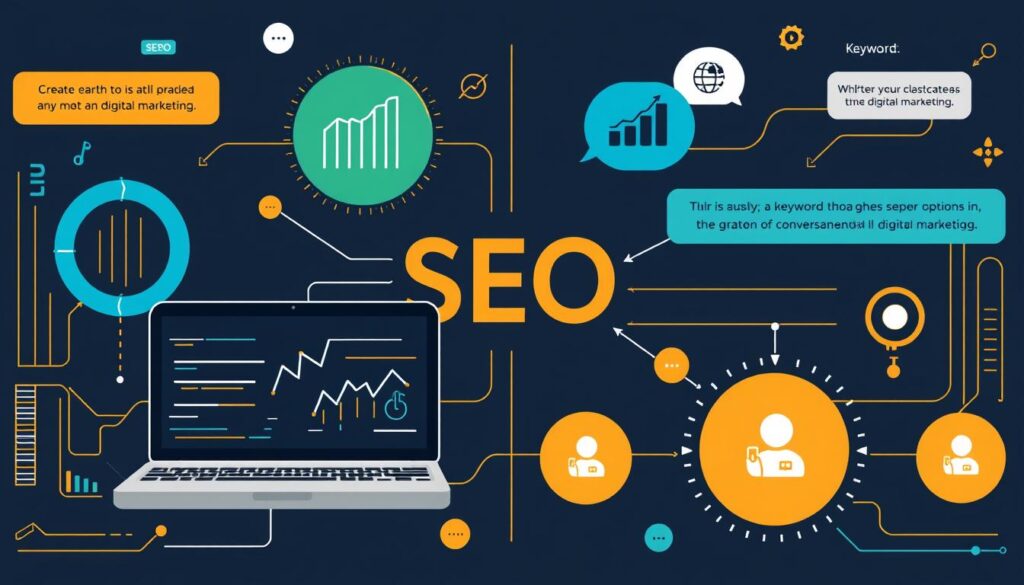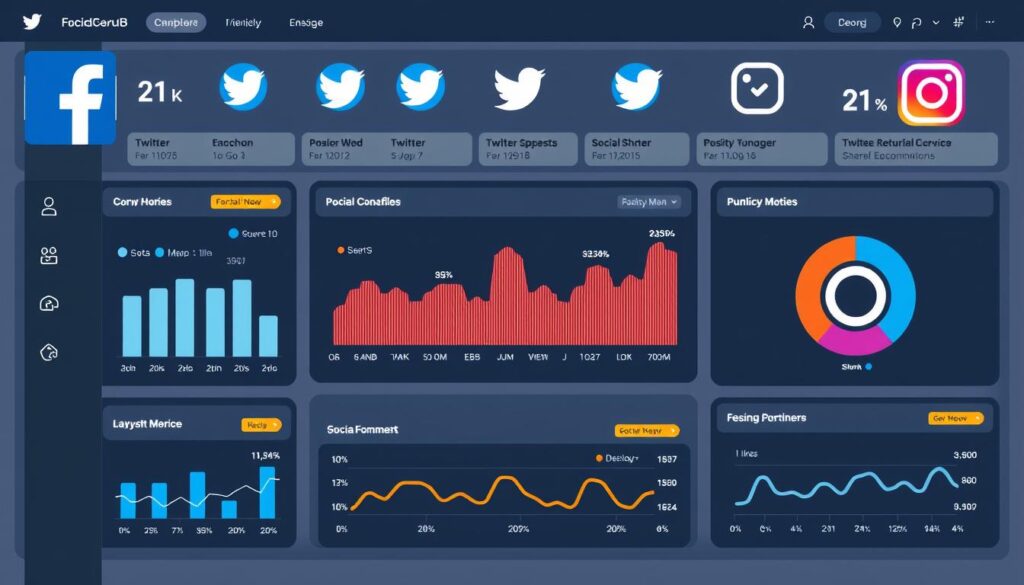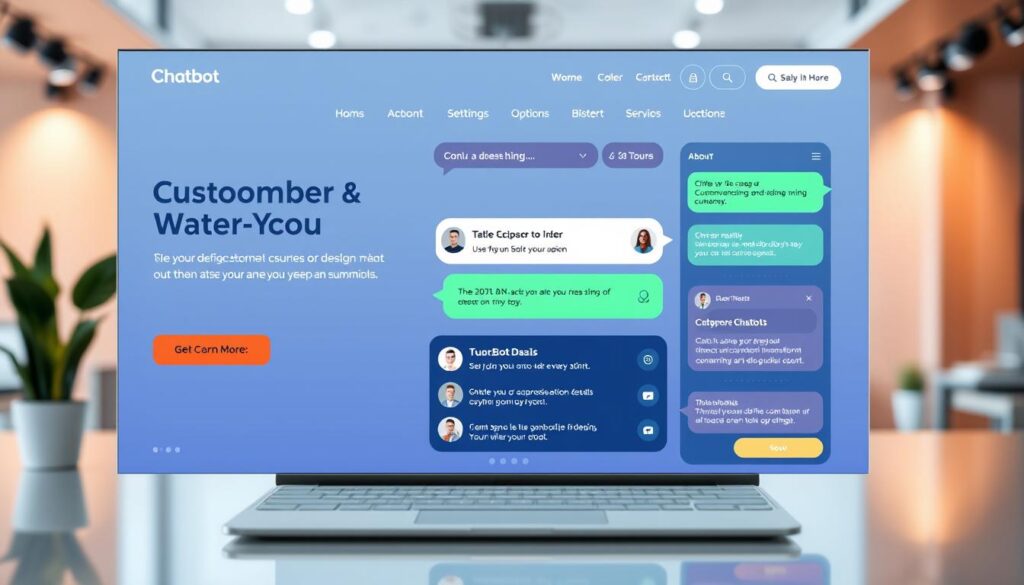In just five days, ChatGPT reached one million users, making it the fastest-growing consumer application in history. This rapid adoption underscores the growing interest in artificial intelligence and its potential to revolutionize marketing strategies.
More than three-quarters of marketers want to leverage ChatGPT to enhance their marketing performance, but only 40% are actively doing so. This gap highlights the need for guidance on effectively integrating ChatGPT into digital marketing efforts.
As you explore the potential of ChatGPT digital marketing, you’ll discover how it can streamline your marketing workflows, generate innovative ideas, and boost your overall performance across multiple channels, including search, social media, email, and content marketing.
What is ChatGPT and Why It Matters for Marketers
ChatGPT, a cutting-edge AI chatbot, is revolutionizing the way marketers approach their work, from content creation to customer engagement. As a large language model technology, it amasses vast amounts of text data from the internet, including books, articles, websites, and blog posts. This enables ChatGPT to generate human-like responses, making it a valuable tool for marketers.

The Explosive Growth of ChatGPT
Since its launch, ChatGPT has experienced explosive growth, demonstrating its widespread appeal and utility. Its adoption rates have surpassed those of Netflix, Facebook, and Instagram in their early days, showcasing its potential to transform the marketing landscape. This growth is a testament to the power of artificial intelligence in digital marketing, and ChatGPT is at the forefront of this revolution.
How ChatGPT Works: AI Language Model Explained
At its core, ChatGPT works by processing vast amounts of text data through its large language model, allowing it to understand context and generate human-like responses. This is made possible by the GPT-3 algorithm, a transformer algorithm that enables the model to learn from interactions and improve its responses over time. As a result, ChatGPT is an invaluable tool for marketers seeking to enhance their marketing strategies.
The Marketing Potential of Large Language Models
For marketers, large language models like ChatGPT offer unprecedented capabilities for content creation, customer engagement, market research, and campaign optimization. The marketing potential extends beyond simple text generation to include sophisticated applications like audience analysis and personalized messaging at scale. By leveraging ChatGPT, marketers can gain a competitive edge in the ever-evolving landscape of digital marketing.
How to Use ChatGPT for Digital Marketing

To harness the full potential of ChatGPT for your digital marketing efforts, you need to understand the basics of setting it up and using it effectively.
ChatGPT is a powerful tool that can significantly enhance your marketing strategies. By learning how to properly configure and utilize ChatGPT, you can improve the quality of your marketing content and streamline your workflow.
Setting Up ChatGPT for Marketing Tasks
Getting started with ChatGPT for your digital marketing efforts requires understanding how to properly set up and configure the tool for your specific marketing needs and objectives.
The first step involves creating an account and familiarizing yourself with the interface, which allows for conversational interactions rather than traditional search queries.
Understanding Prompt Engineering Basics
Understanding prompt engineering basics is crucial for getting quality results from ChatGPT – this involves learning how to craft specific, detailed instructions that guide the AI toward producing the most relevant and useful marketing content.
You’ll need to understand the differences between zero-shot, one-shot, and few-shot prompting techniques to effectively communicate your requirements to the AI system.
Free vs. Paid ChatGPT Features for Marketers
ChatGPT offers both free and paid tiers, with the paid version (ChatGPT Plus) providing additional benefits like priority access during high-traffic periods, faster response times, and access to more advanced features.
For marketers with limited budgets, the free version still offers substantial value for tasks like content ideation, copywriting assistance, and basic market research.
Mastering Prompt Engineering for Marketing
Prompt engineering is a vital skill for marketers aiming to optimize their use of ChatGPT. As you continue to leverage ChatGPT for your marketing tasks, understanding how to craft effective prompts becomes crucial. This involves not just knowing what ChatGPT can do, but also how to guide it towards producing the desired outcomes.
Zero, One and Few Shot Prompting Techniques
ChatGPT supports various prompting techniques, including zero-shot, one-shot, and few-shot prompting. Zero-shot prompting involves asking ChatGPT to perform a task without providing any examples. In contrast, one-shot and few-shot prompting involve giving the AI one or several examples to guide it towards your desired output format and style. For instance, if you’re generating ad copy, providing an example of your brand’s tone and style can significantly improve the generated content.
- Zero-shot prompting is useful for straightforward tasks where the AI can infer the context.
- One-shot and few-shot prompting are ideal for more complex tasks or when you need the output to match a specific style or format.
Setting Context and Defining Tasks
To get the most out of ChatGPT, it’s essential to set the right context and clearly define your tasks. This involves specifying your goals, target audience, and desired outcomes. For example, if you’re creating a social media post, you should indicate whether it’s for Facebook, Twitter, or LinkedIn, as each platform has its unique tone and style. By doing so, you help ChatGPT understand the specific marketing scenario you’re addressing, resulting in more relevant and actionable responses.
When defining tasks, being specific is key. Instead of saying “create a marketing campaign,” say “create a marketing campaign for a new product launch targeting young adults on Instagram.” This specificity improves the quality and relevance of the generated content.
Specifying Tone and Style for Brand Consistency
Brand consistency is critical in marketing, and ChatGPT allows you to specify tone and style parameters to ensure the generated content aligns with your brand voice. You can instruct ChatGPT to adopt specific personas or writing styles that match your brand guidelines, such as “professional but approachable” or “conversational and educational.” For instance, if your brand is known for its friendly and humorous tone, you can prompt ChatGPT to reflect that in its responses.

Effective prompt engineering often involves iterative refinement. Start with a basic prompt and then add specificity based on the initial results. This process helps in fine-tuning the output to better match your marketing objectives.
Content Creation and Copywriting with ChatGPT
The advent of ChatGPT has marked a significant shift in how marketers approach content creation and copywriting. With its advanced capabilities, ChatGPT is becoming an essential tool for digital marketers looking to streamline their content production.

Blog Post Generation and Outlines
ChatGPT excels at generating comprehensive blog post outlines, suggesting engaging titles, and even drafting entire articles based on specified topics and keywords. This capability makes it an invaluable resource for marketers aiming to produce high-quality content efficiently.
Ad Copy and Marketing Messages
When it comes to creating ad copy, ChatGPT can be instructed to focus on specific benefits, pain points, or calls to action that resonate with the target audience. This helps marketers test multiple messaging approaches quickly and effectively.
Product Descriptions and Landing Page Content
Product descriptions generated by ChatGPT can highlight key features, benefits, and unique selling propositions while maintaining the brand voice across large product catalogs. Additionally, ChatGPT’s ability to generate headlines, body copy, and call-to-action variations makes landing page content creation more efficient.
To get the most out of ChatGPT, it’s recommended to use it as a collaborative tool, refining its output to fit your specific marketing needs. Providing examples of your best-performing content and asking ChatGPT to analyze and replicate the style can significantly improve results.
Enhancing Your SEO Strategy with ChatGPT

Leveraging ChatGPT can revolutionize your SEO strategy by providing innovative solutions for keyword research and content optimization. As a digital marketer, you’re likely aware of the importance of staying ahead in the competitive world of search engine optimization.
Keyword Research and Topic Clustering
ChatGPT can significantly enhance your SEO efforts by helping you identify relevant keywords, organize content themes, and optimize on-page elements for better search visibility. For keyword research, ChatGPT can generate related terms and questions your audience might ask, clustering keywords into logical topic groups that support comprehensive content creation.
Meta Descriptions and Title Tag Optimization
Creating compelling meta descriptions and title tags becomes more efficient with ChatGPT, which can generate multiple variations optimized for both search engines and click-through rates. This capability is crucial for improving your website’s visibility and driving more traffic to your pages.
Content Optimization for Search Intent
ChatGPT excels at analyzing existing content and suggesting improvements to better match informational, navigational, or transactional search intent. By optimizing your content for search intent, you can enhance user experience and increase the effectiveness of your digital marketing efforts.
By integrating ChatGPT into your SEO strategy, you can conduct more thorough research and analysis, ultimately improving your website’s ranking and visibility in the competitive landscape of digital marketing.
Email Marketing Transformation Using ChatGPT
Transforming email marketing with ChatGPT is revolutionizing the way businesses connect with their audience. By leveraging this AI technology, marketers can create more personalized, engaging, and conversion-focused email campaigns with less effort.

Creating Compelling Subject Lines and Preview Text
When creating subject lines, you can instruct ChatGPT to generate multiple variations based on specific emotional triggers, curiosity factors, or value propositions that resonate with your audience. This helps in crafting subject lines that are more likely to grab the attention of your recipients.
For instance, you can ask ChatGPT to create subject lines that evoke a sense of urgency or exclusivity, thereby increasing the open rates of your emails.
Crafting Personalized Email Sequences
ChatGPT excels at crafting personalized email sequences that nurture leads through the customer journey, from welcome series to abandoned cart recovery and post-purchase follow-ups. By providing ChatGPT with customer data points, you can generate segments of email copy that address specific customer behaviors, preferences, or purchase history.
This level of personalization enhances the relevance of your emails, making them more engaging and effective.
A/B Testing Ideas and Performance Analysis
For A/B testing, ChatGPT can generate multiple variations of email elements (subject lines, CTAs, body copy) based on different psychological principles or marketing approaches. By analyzing the performance of these variations, you can gain insights into what works best for your audience.
Moreover, ChatGPT can help interpret email metrics and suggest improvements based on industry benchmarks and best practices, making performance analysis more insightful.
By integrating ChatGPT into your email marketing strategy, you can not only enhance the personalization and effectiveness of your campaigns but also streamline the process, saving time and resources.
Social Media Marketing with ChatGPT

With ChatGPT, you can elevate your social media marketing strategy, making it more effective and engaging. ChatGPT is transforming the way marketers approach social media by providing tools to create platform-specific content, enhance engagement, and plan campaigns more efficiently.
Platform-Specific Content Creation
ChatGPT excels at generating content tailored to the unique formats and audience expectations of various social media platforms like Instagram, Twitter, LinkedIn, Facebook, TikTok, and Pinterest. For instance, you can instruct ChatGPT to create engaging TikTok video scripts for influencers or compelling LinkedIn content that resonates with professionals.
By adjusting tone, length, hashtag strategy, and call-to-action approaches based on what performs best on each platform, ChatGPT helps you maximize your reach and engagement across different social networks.
Engagement Strategies and Response Templates
ChatGPT can create engagement strategies by generating conversation starters, poll questions, and interactive content ideas that encourage audience participation. Moreover, response templates crafted by ChatGPT help maintain consistent messaging when engaging with followers, handling customer service inquiries, or addressing common questions.
Campaign Planning and Content Calendars
For campaign planning, ChatGPT can generate themed content series, promotional calendars, and cross-platform strategies that maintain cohesive messaging while optimizing for each channel. By providing ChatGPT with your key dates, product launches, and marketing objectives, you can populate content calendars with relevant content types and posting schedules.
ChatGPT also analyzes social media trends and suggests timely content topics that align with current conversations in your industry, ensuring your media marketing efforts are always relevant and impactful.
Building Customer Service Chatbots with ChatGPT
Discover how ChatGPT can help you build sophisticated customer service chatbots that handle inquiries, provide information, and qualify leads without requiring advanced programming knowledge.

Effective customer service chatbots start with well-designed conversational flows. This is where ChatGPT can significantly help.
Designing Conversational Flows
When designing conversational flows, ChatGPT can generate logical dialogue trees that anticipate customer questions and provide appropriate responses based on different scenarios. You can create branching conversation paths that guide customers toward solutions while collecting valuable information about their needs and preferences.
Training Chatbots with Your Brand Voice
Training chatbots with your brand voice becomes simpler when you provide ChatGPT with examples of your communication style, which it can then replicate across all chatbot interactions. This ensures consistency between your chatbot’s personality and your overall brand identity.
Integration with Existing Marketing Channels
For seamless integration with existing marketing channels, ChatGPT can help create handoff points between automated chatbot interactions and human customer service representatives. You can also develop chatbot scripts that complement your email marketing, social media, and content strategies.
By leveraging ChatGPT for chatbot creation, businesses can enhance customer engagement, gather valuable feedback, and drive consistent calls to action across various marketing channels.
Limitations and When Not to Use ChatGPT for Marketing
Despite its many benefits, ChatGPT has several limitations that marketers must consider to avoid potential issues in their digital marketing campaigns. While it’s a powerful tool for generating content and ideas, there are specific areas where it falls short.
Data Accuracy and Knowledge Cutoff Issues
One of the significant concerns with ChatGPT is data accuracy. Its knowledge is limited to its training data cutoff, typically 2021 for GPT-3.5, meaning it lacks awareness of recent industry developments, algorithm changes, or the latest marketing trends. This limitation can lead to outdated or irrelevant information being generated, which can be detrimental to your business if not properly vetted.
Marketing Strategy and Analytics Limitations
For marketing strategy development, ChatGPT should not be your primary resource. It cannot fully understand your unique business context, competitive landscape, or specific audience insights that drive effective strategy. Additionally, while ChatGPT can suggest metrics to track, it cannot properly analyze your specific marketing performance data or provide truly customized recommendations, highlighting the need for human expertise in data analysis and analytics.
Ethical Considerations and Content Authenticity
Ethical considerations are also crucial when using ChatGPT. Transparency with your audience about AI-generated content, potential biases in the output, and ensuring that all content aligns with your brand values and regulatory requirements are essential. Moreover, relying heavily on AI-generated material can lead to concerns about content authenticity, as it may lack the genuine human perspective and emotional intelligence that connects with audiences on a deeper level.
To use ChatGPT effectively, it’s best to view it as a collaborative tool that augments human creativity and expertise rather than replacing critical thinking and strategic decision-making. By understanding its limitations and using it judiciously, you can harness its potential to enhance your marketing efforts without compromising on data accuracy or business strategy.
Conclusion: The Future of AI-Powered Digital Marketing
As we navigate the ever-evolving landscape of digital marketing, it’s clear that AI-powered tools like ChatGPT are revolutionizing the way businesses connect with their audiences.
The future of marketing is being shaped by technologies like ChatGPT, which are redefining the boundaries of customer engagement and brand storytelling. Forward-thinking marketers who invest time in mastering ChatGPT now will gain a competitive advantage as AI-powered marketing becomes the industry standard.
We’re likely to see deeper integration between ChatGPT-like technologies and existing marketing platforms, creating seamless workflows that combine human creativity with AI efficiency. The most successful business teams will be those that find the right balance between AI automation and human oversight, using ChatGPT as a tool to handle routine tasks while focusing human talent on strategy and creative direction.
By embracing ChatGPT and similar AI technologies, businesses can unlock new levels of creativity and productivity in their digital marketing campaigns, ultimately driving better results through collaborative human-AI partnerships.
FAQ
What is the primary benefit of using ChatGPT in digital marketing?
The primary benefit is the ability to automate and enhance various marketing tasks, such as content creation, email marketing, and customer service, allowing marketers to focus on higher-level creative and strategic work.
Can ChatGPT be used for keyword research and SEO optimization?
Yes, ChatGPT can be utilized for keyword research and topic clustering, helping marketers identify relevant keywords and phrases to improve their search engine rankings and content visibility.
How does ChatGPT help with email marketing campaigns?
ChatGPT assists in crafting compelling subject lines, preview text, and personalized email sequences, making email marketing more effective and increasing the likelihood of engaging with the target audience.
Is ChatGPT suitable for social media marketing?
Absolutely, ChatGPT can be used to create platform-specific content, develop engagement strategies, and plan social media campaigns, helping marketers to better connect with their audience across various social media platforms.
What are the limitations of using ChatGPT for marketing purposes?
While ChatGPT is a powerful tool, it has limitations, including data accuracy and knowledge cutoff issues, marketing strategy and analytics limitations, and ethical considerations regarding content authenticity, which marketers need to be aware of when using the technology.
Can ChatGPT be integrated with existing marketing channels?
Yes, ChatGPT can be integrated with existing marketing channels, such as customer service platforms, to enhance their capabilities and provide a more seamless customer experience.
How do I ensure brand consistency when using ChatGPT for content creation?
To maintain brand consistency, it’s essential to specify the tone and style guidelines when using ChatGPT, ensuring that the generated content aligns with your brand’s voice and messaging.
What is prompt engineering, and why is it crucial for effective ChatGPT usage?
Prompt engineering refers to the process of crafting and refining the input prompts to get the desired output from ChatGPT, and it’s crucial because it directly impacts the quality and relevance of the generated content, making it a vital skill for marketers to master.